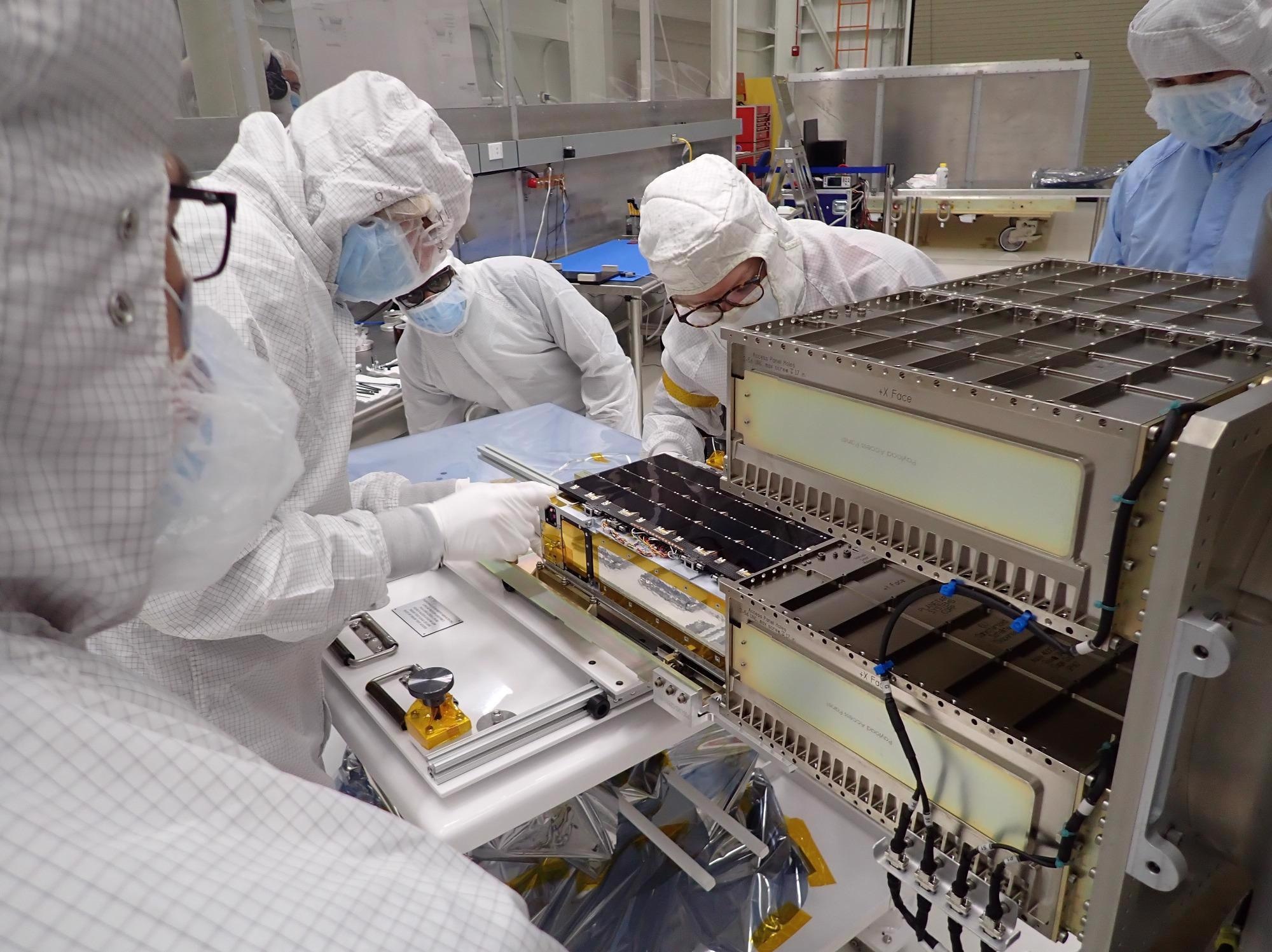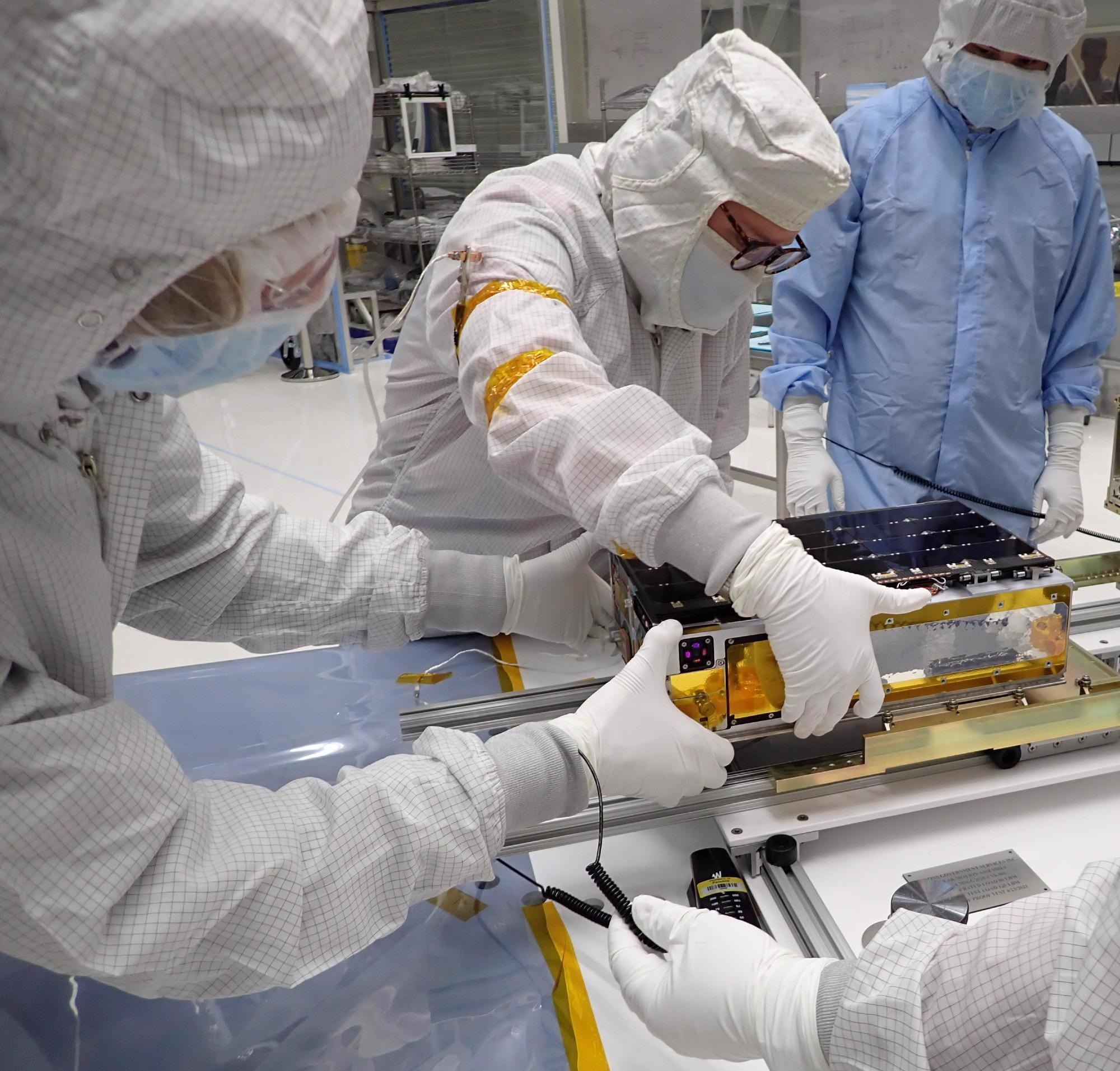Could you please tell us a little about your background and how you came to be the principal investigator for this project?
I studied astronomy and physics in both college and graduate school. As part of my postdoctoral work with the Hubble Space Telescope, I became interested in extrasolar planets and I combined this science interest with my background in space instrumentation on sounding rockets -- with a lot of help from the scientists and engineers who went on to form the core of the CUTE science team -- to develop the CUTE proposal.
What are CubeSats and how do they differ from conventional or larger satellites?
Of course, they are smaller and cheaper! One of the advantages of a CubeSat is that it can be assigned to a dedicated science question. Whereas our large space observatories, e.g., the Hubble Space Telescope, conduct science investigations across a wide range of space science topics, a CubeSat can be focused on observations that require a dedicated resource. For CUTE, this focused science investigation is the study of hot Jupiter exoplanets.
CUTE stands for the Colorado Ultraviolet Transit Experiment. Could you tell us what this is?
The CUTE CubeSat mission aims to observe giant exoplanets by monitoring them in the near-ultraviolet part of the electromagnetic spectrum. CUTE will conduct a survey of heavy elements such as iron and magnesium escaping from the atmospheres of the most extreme planets in the Galaxy.
The CUTE mission carries a magnifying spectrograph fed by a rectangular telescope, all of which are packed into a 6U spacecraft. The mission will target 10-12 exoplanets in an 8-month science mission.
What was the development process of CUTE like, from assembly to launch?
After being awarded the grant to build CUTE, we dove into a detailed design of the science instrument and worked with our industrial partners to fabricate the telescope, spectrograph, and spacecraft.

Image Credit: NASA/WFF/University of Colorado
CU Boulder students, engineers, and scientists assembled all of these things over the last two years. The instrument and spacecraft were tested in the facilities at LASP and were delivered to NASA at Vandenberg Space Force Base in July 2021. Since that time, we have been refining our ground station and test programs to be ready to start working with CUTE following launch.
What was it like partnering with NASA to develop this project?
It was a learning experience for all involved. CUTE was only NASA’s second astrophysics CubeSat and the first to launch as a secondary payload on a major NASA mission (Landsat 9).
What planets in particular will CUTE study?
CUTE will observe about a dozen “hot Jupiter” planets; these are gas giants like Jupiter in our own solar system, but parked very close to their parent stars (much closer than the orbit of Mercury in our own solar system). This type of star-planet system has no analog in the solar system and we can use these extreme environments as a laboratory to study this fundamental process of atmospheric escape.
CUTE launched successfully on September 27th 2021. How has it fared since its launch, and have there been successful communications?
Thanks to the great efforts of the amateur radio community, we were able to make contact with CUTE less than 24 hours after launch. We are in regular communications with the spacecraft now and working on the spacecraft and payload commissioning.
When will you receive the first data from CUTE, and how long will its mission last?
We expect to commission the science instrument in the next two weeks, after which regular science operations will start. We hope to complete the main science mission in about 7 months after that point, although we expect CUTE to stay in orbit for more than 2 years.
What opportunities do CubeSats offer students and scientists to learn and test out ideas?
Cubesats are part of NASA’s suborbital class of missions (which also includes rockets and balloons); these missions offer a great opportunity for students and early-career scientists and engineers to get involved with the hands-on design, assembly, and analysis of NASA space missions in ways that they typically cannot do on larger missions.

Image Credit: NASA/WFF/University of Colorado
How excited are you personally about the launch of CUTE and the data that will be collected?
Very excited! CUTE has been a fixture in my work life for about 5 years, so seeing those first transmissions at our ground station and seeing CUTE respond to the commands sent from our ground station on CU Boulder campus was a really special moment for me. I cannot wait to get the first science data down from CUTE and start exploring how these exoplanets respond to extreme interactions with their parent stars.
What impacts might the discoveries from CUTE have on the field of astrophysics and planetary science?
CUTE’s measurements of atmospheric escape rates allow astronomers and planetary scientists to better understand the physics behind atmospheric loss. This in turn allows us to better understand the atmospheres of known planets and predict the properties of extrasolar planets we have not yet discovered.
What future planetary science missions are you working on or hope to begin working on, if any?
The Extreme-ultraviolet Stellar Characterization for Atmospheric Physics and Evolution (ESCAPE) mission -- https://lasp.colorado.edu/home/cusp/escape/
About Dr. Kevin France
Kevin France is a professor in the Department of Astrophysical and Planetary Sciences at the University of Colorado. Dr. France’s research focuses on exoplanets and their host stars, protoplanetary disks, and the development of instrumentation for ultraviolet astrophysics. He is the Principal Investigator of the ESCAPE Small Explorer mission, the CUTE small satellite mission, and a NASA-supported sounding rocket to study exoplanet atmospheres and flight-test critical path hardware for future UV/optical astrophysics missions. He is a regular guest observer with the Hubble Space Telescope and the chair of the Space Telescope Users Committee. He has been a member of the HST-COS instrument and science teams and the LUVOIR Science and Technology Definition Team. Dr. France received his Ph.D. from Johns Hopkins University in 2006 and was awarded NASA’s Nancy Grace Roman Fellowship in 2013.
France is a professor in the Department of Astrophysical and Planetary Sciences at the University of Colorado. Dr. France’s research focuses on exoplanets and their host stars, protoplanetary disks, and the development of instrumentation for ultraviolet astrophysics. He is the Principal Investigator of the ESCAPE Small Explorer mission, the CUTE small satellite mission, and a NASA-supported sounding rocket to study exoplanet atmospheres and flight-test critical path hardware for future UV/optical astrophysics missions. He is a regular guest observer with the Hubble Space Telescope and the chair of the Space Telescope Users Committee. He has been a member of the HST-COS instrument and science teams and the LUVOIR Science and Technology Definition Team. Dr. France received his Ph.D. from Johns Hopkins University in 2006 and was awarded NASA’s Nancy Grace Roman Fellowship in 2013.
For more information, please visit: https://lasp.colorado.edu/home/cute/
Disclaimer: The views expressed here are those of the interviewee and do not necessarily represent the views of AZoM.com Limited (T/A) AZoNetwork, the owner and operator of this website. This disclaimer forms part of the Terms and Conditions of use of this website.